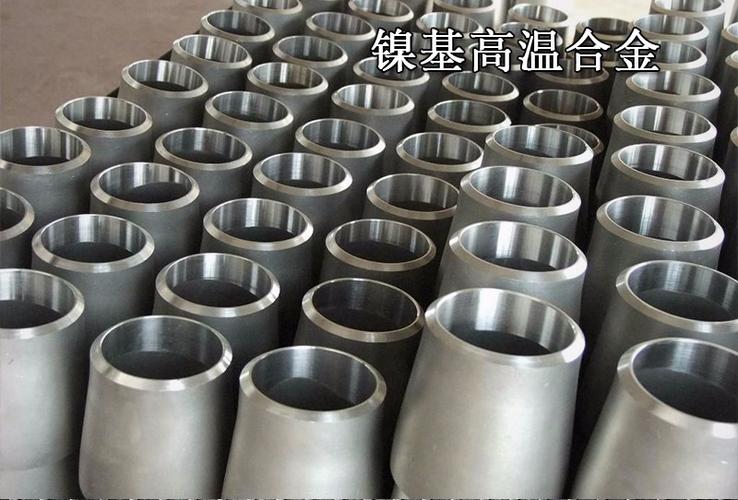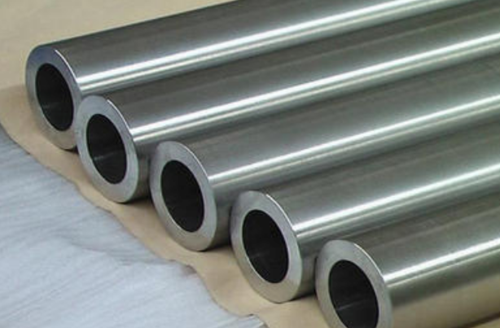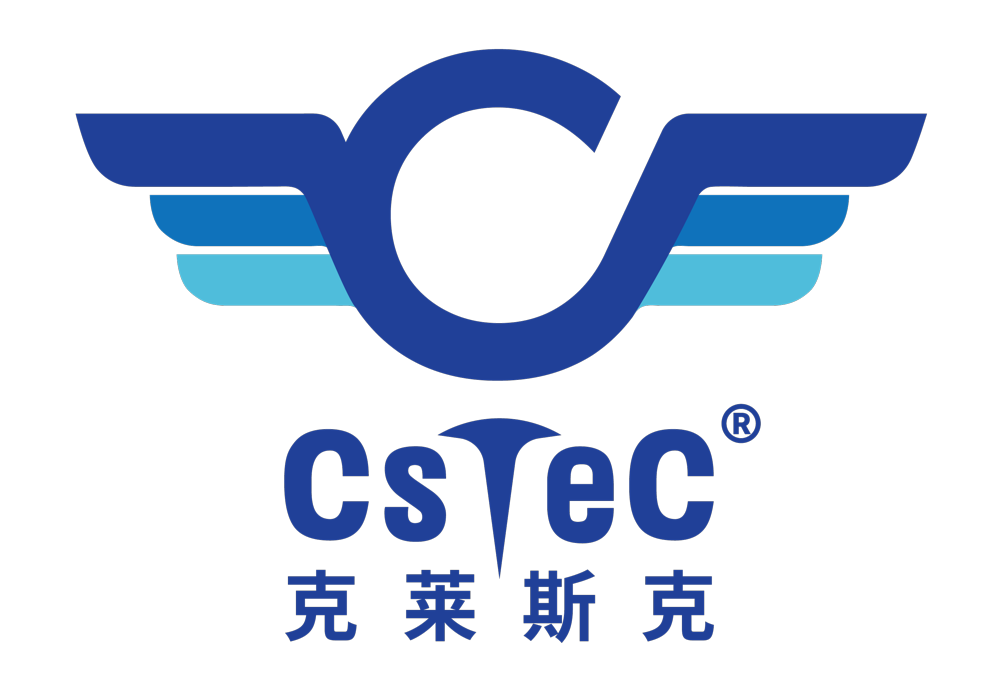
Nickel-based alloy refers to a class of alloys with high strength and certain antioxidant corrosion resistance at 650 ~ 1000℃. According to the main properties, it is subdivided into nickel-based heat resistant alloy, nickel-based corrosion resistant alloy, nickel-based wear resistant alloy, nickel-based precision alloy and nickel-based shape memory alloy. According to the different matrix, superalloy is divided into: iron based superalloy, nickel based superalloy and cobalt based superalloy. Nickel-based superalloy is referred to as nickel-based alloy.
The main alloying elements of corrosion resistant alloy are copper, chromium and molybdenum. It has good comprehensive properties and can withstand various acid corrosion and stress corrosion. The earliest application (produced in the United States in 1905) is nickel copper (Ni-Cu) alloy, also known as Monel alloy (Monel alloy Ni 70 Cu30); In addition, there are nickel-chromium (Ni-Cr) alloy (that is, nickel-based heat-resistant alloy, heat-resistant corrosion alloy in corrosion resistant alloy), nickel-molybdenum (Ni-Mo) alloy (mainly refers to Hastelloy B series), nickel-chromium molybdenum (Ni-Cr-Mo) alloy (mainly refers to Hastelloy C series) and so on. At the same time, pure nickel is also a typical representative of nickel-based corrosion resistant alloys. These nickel-based corrosion resistant alloys are mainly used in the manufacture of components for various corrosion resistant environments such as petroleum, chemical, and electric power.
Nickel-based corrosion resistant alloys mostly have austenitic structures. In the state of solid solution and aging treatment, there are intermetallic phases and metal carbon nitrides on the austenitic matrix and grain boundaries of the alloy, and various corrosion resistant alloys are classified by composition and their characteristics are as follows:
Ni-Cu alloy has better corrosion resistance than nickel in reducing media, and better corrosion resistance than copper in oxidizing media, and it is the best material to resist high temperature fluorine gas, hydrogen fluoride and hydrofluoric acid in the absence of oxygen and oxidants (see metal corrosion).
Ni-Cr alloy is also nickel-based heat resistant alloy; It is mainly used in oxidizing medium conditions. It is resistant to high temperature oxidation and corrosion of gases containing sulfur and vanadium, and its corrosion resistance increases with the increase of chromium content. This kind of alloy also has good resistance to hydroxide (such as NaOH, KOH) corrosion and stress corrosion resistance.
Ni-Mo alloy is mainly used under the conditions of corrosion by reducing media. It is one of the best alloys to resist hydrochloric acid corrosion, but in the presence of aerobic and oxidizing agents, corrosion resistance will be significantly reduced.
Ni-cr-mo (W) alloy has the properties of the above Ni-Cr alloy and Ni-Mo alloy. It is mainly used under the conditions of oxidizing and reducing mixed media. This kind of alloy has good corrosion resistance in high temperature hydrogen fluoride gas, in hydrochloric acid and hydrofluoric acid solution containing oxygen and oxidant, and in wet chlorine gas at room temperature.
Ni-Cr-Mo-Cu alloy has the ability to resist both nitric acid and sulfuric acid corrosion, and also has good corrosion resistance in some oxidation-reducing mixed acids.
The main alloying elements of wear-resistant alloys are chromium, molybdenum and tungsten, and also contain a small amount of niobium, tantalum and indium. In addition to wear resistance, its oxidation resistance, corrosion resistance, welding performance is good. It can be used as a coating material, which can be coated on the surface of other base materials by surfacing welding and spraying process.
Nickel base powders include self-fluxing alloy powder and non-self-fluxing alloy powder.
The non-self-fluxing nickel-based powder refers to the nickel-based alloy powder which does not contain B, Si or B, Si content is low. This kind of powder is widely used in plasma arc spraying coating, flame spraying coating and plasma surface strengthening. It mainly includes: Ni-Cr alloy powder, Ni-Cr-Mo alloy powder, Ni-Cr-Fe alloy powder, Ni-Cu alloy powder, Ni-P and Ni-Cr-P alloy powder, Ni-Cr-Mo-Fe alloy powder, Ni-Cr-Mo-Si high wear-resistant alloy powder, Ni-Cr-Fe-Al alloy powder, Ni-Cr- Fe-Al-B-Si alloy powder, Ni-Cr-Si alloy powder, Ni-Cr-W based wear resistance alloy powder, etc.
The nickel base self-fluxing alloy powder was formed by adding proper amount of B and Si to the nickel alloy powder. The so-called self-melting alloy powder is also known as low eutectic alloy, hard surface alloy, which is a series of powder materials formed by adding low-melting eutectic alloy elements (mainly boron and silicon) to nickel, cobalt and iron-based alloys. Commonly used nickel-based self-fluxing alloy powders are Ni-B-Si alloy powder, Ni-Cr-B-Si-Mo, Ni-Cr-B-Si-Mo-Cu, high molybdenum nickel base self-fluxing alloy powder, high chromium molybdenum nickel base self-fluxing alloy powder, Ni-Cr-W-C base self-fluxing alloy powder, high copper self-fluxing alloy powder Gold powder, tungsten carbide dispersion type nickel based self-fluxing alloy powder, etc.
Precision alloys include nickel-based soft magnetic alloy, nickel-based precision resistance alloy and nickel-based electric heating alloy. The most commonly used soft magnetic alloy is about 80% nickel permalloy, its maximum permeability and initial permeability is high, coercivity is low, is an important core material in the electronics industry. The main alloying elements of nickel-based precision resistance alloy are chromium, aluminum and copper. This alloy has high resistivity, low resistivity temperature coefficient and good corrosion resistance, and is used to make resistors. Nickel-based electrothermal alloy is a 20% chromium nickel alloy with good oxidation resistance and corrosion resistance, and can be used for a long time at 1000 ~ 1100℃.
Memory alloy A nickel alloy containing 50 (at)% titanium. The recovery temperature is 70℃, and the shape memory effect is good. A small change in the proportion of nickel-titanium components can make the recovery temperature change in the range of 30 ~ 100℃. It is widely used in the manufacture of automatic opening structural parts used in spacecraft, self-stimulating fasteners used in aerospace industry, artificial heart motors used in biomedicine, etc.
Nickel-based alloys are used in many fields, such as:
- Ocean: Marine structures in the Marine environment, seawater desalination, mariculture, seawater heat exchange, etc.
2, environmental protection: thermal power generation of flue gas desulfurization equipment, wastewater treatment. - Energy field: nuclear power generation, comprehensive utilization of coal, tidal power generation, etc.
- Petrochemical field: oil refining, chemical equipment, etc.
- Food field: salt production, soy sauce brewing, etc. In the above many areas, ordinary stainless steel 304 is not competent, in these special areas, special stainless steel is indispensable, but also can not be replaced. In recent years, with the rapid development of the economy, with the continuous improvement of the level of the industrial field, more and more projects need higher grade stainless steel. With the growth of demand for nickel-based alloys in various industries. In 2011, China’s nickel-based alloy market reached 23.07 billion yuan, with a year-on-year growth rate of 19.47%. Therefore, the development level of the industry is in a steady upward trend.
Representative materials of nickel-based alloys are:
1, Incoloy alloy, such as Incoloy800, the main components are; 32Ni-21Cr-Ti,Al; It is a heat-resistant alloy;
2, Inconel alloy, such as Inconel600, the main components are; 73Ni-15Cr-Ti,Al; It is a heat-resistant alloy;
3, Hastelloy alloy, that is, Hastelloy alloy, such as Hastelloy C-276, the main components are; 56Ni-16Cr-16Mo-4W; It belongs to corrosion-resistant alloy;
4, Monel alloy, that is, Monel alloy, such as Monel 400, the main components are; 65Ni-34Cu; It belongs to corrosion-resistant alloy;
The main alloying elements are chromium, tungsten, molybdenum, cobalt, aluminum, titanium, boron, zirconium and so on. Among them, Cr, Ai and other elements mainly play the role of anti-oxidation, and other elements have the role of solid solution strengthening, precipitation strengthening and grain boundary strengthening.
At 650 ~ 1000℃ high temperature has a high strength and a certain degree of oxidative corrosion resistance, due to high enough high temperature strength and oxidative corrosion resistance, so often used in the manufacture of aircraft engine blades and rocket engines, nuclear reactors, energy conversion equipment on the high temperature parts. (2023-09-28)



